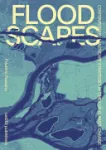| Titre : | Floodscapes : contemporary landscape strategies in times of climate change |
| Auteurs : | Frédéric Rossano, Auteur ; Stéphanie Grégoire, Directeur de publication |
| Type de document : | texte imprimé |
| Editeur : | Rotterdam : nai010 publishers, 2021 |
| ISBN/ISSN/EAN : | 978-94-6208-525-1 |
| Format : | 1 vol. (270 p.) / ill. en noir et en coul., couv. ill. en coul. / 24 cm |
| Note générale : | Bibliogr. p. 259-266 |
| Langues: | Anglais |
| Index. décimale : | Environnement - Gestion des risques |
| Catégories : |
[Archirès ] 023 Aménagement et planification du territoire > Aménagement du territoire [Archirès ] 030 Paysage - environnement > Environnement > Eau > Rapport eau-architecture [Archirès ] 030 Paysage - environnement > Environnement > Risque naturel > Inondation [Archirès ] 080 Sciences exactes et appliquées > Climatologie > Changement climatique |
| Résumé : | L'ouvrage retrace d'abord l'histoire de la relation de l'humanité avec les inondations, oscillant entre lutte et symbiose. L'ingénierie hydraulique moderne a transformé les plaines et les vallées en environnements entièrement habitables mais également inondables. En effet, ces espaces sont devenus très vulnérables au changement climatique. Des stratégies d'adaptation sont mises en place pour prévenir les inondations futures et en réduire les impacts. À travers des enquêtes historiques et l'analyse de six projets contemporains mis en œuvre dans quatre pays européens, « Floodscapes » illustre comment les mesures d'atténuation des inondations peuvent être intégrées dans l'espace et la culture locales. |
| Note de contenu : |
7. Introduction
9. Summary God, the river and the engineer 16. A hydrological and ethnological Big Bang ? 20. The flood, local flood turned global myth ? 21. First account of a flood 26. The ultimate weapon 30. The end and the origin 33. From myth to phenomenon 39. From angry gods to heroic saviours 45. Pre-industrial floodplains 45. Early adaptive landscapes 48. Living with the flow 52. Flood as land-maker 56. Reinventing flexible landscape 59. Dreams and achievements of the great reclamation works 59. A European self-colonization 67. From river space to border river 69. From common good to real estate 72. Tame or set free : nature and the englightenment 74. Rewriting history : the negation of pre-industrial economies and the apology of technology 77. The pro and cons of containment 83. After the correction 83. Correcting the correction : illusion of progress and never-ending adjustment 86. Environmental groups and the engineered landscape 89. The rehabilitation of the river shore and floodplain New European floodscape 97. Climate change expectations and narratives 97. A young idea for an old process 103. Man as master of climate 106. Panic and circumspection 111. Framing a new flood management policy 117. Room for the River : reversible landscapes in the Rhine-Meuse delta 120. The biesbosch, from land to water to land 120. First regulation and first mitigation project 124. The delta enclosed : nearly the end of the Biesbosch ? 130. From policy to proposal : opening the scope of possible measures 134. The project as tool of involvment 136. Embedding spatial quality into flood prevention 138. Flooding the Biesbosch (again) 140. Noordwaard gradual landscape 149. Controlled disaster in the overdiepse polder 159. Meerstad : flood as investment 161. From woldmeer to meerstad 164. Landscape economics 166. From program to plan 170. Red for blue and blue for red 171. Beyond the housing crisis : meerstad without stad 177. Elastic landscape for the isère valley 178. 1870-1914 : the isère channeled « for good » 179. The 1929 schneider plan : a manual for flood mitigation 181. Correcting the second correction 182. The isère amont project 185. From scenarios to consensus 189. Metropolitan river : a missed opportunity ? 195. Isar plan : the wild, the urban and the « true alpine river » 195. The isar plan 199. From water machine to ecological corridor : first renaturation proposals 207. «Something to discuss about » : design as a starting point 208. Controlled flooding as vaccine against disastrous floods 213. The third rhône correction as gesamtkunstwerk ? 213. The rhône river, from landscape to infrastructure 222. Renaturation ambitions along swiss rivers : a u-turn in federal policy 224. Flood as agent of landscape architecture : from river channel to river space 226. Loosening the upper rhône, from policy to project 229. 2000 : the wake-up call 236. Sion-sur-rhône : landscape studio as agent provocateur Comparisons and conclusions : designing flood-ready landscapes 245. Setting goals and communicating concepts 245. Correction-coercion ? 246. Negotiating room for the river 249. Landscape new Deals 249. The necessity of fear 253. Risk transfers 259. Farmers vs. Beavers : legitimacy conflicts in land-use adaptation 261. Combined ambitions for multifunctional landscape : are floodscapes lost spaces ? 266. Space for flood, space for landscape ? 269. Redefining riverine aesthetics 269. The fluctuating role of landscape architects 270. The need for images and visions 271. Setting aesthetic values 280. Floodscapes as reality check 283. Epilogue Bibliography 285. Part I 296. Part III 298. Interviews 299. Data and statistical sources 300. Previous publications Appendix 303. From watercolors to point clouds : floodscapes design tools 304. Shifting scales 305. Synchronization : historical maps and future visions 306. Landscape morphology as risk map 308. Sketching scenarios 309. Quantitying options |
Exemplaires (1)
| Code-barres | Cote | Support | Localisation | Section | Disponibilité |
|---|---|---|---|---|---|
| 030957 | L.05/ROS | Livres | CENTRE DE DOCUMENTATION | Salle de consultation | Sorti jusqu'au 05/12/2025 |



